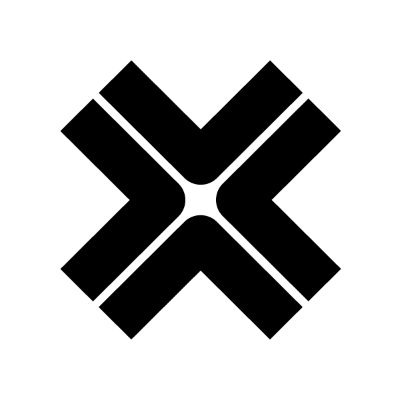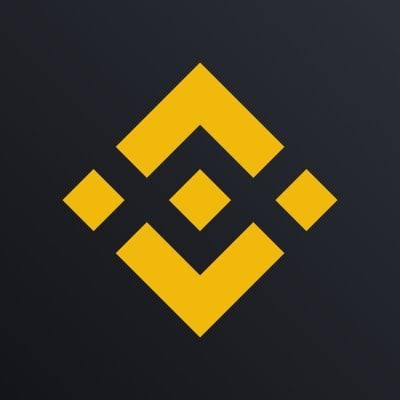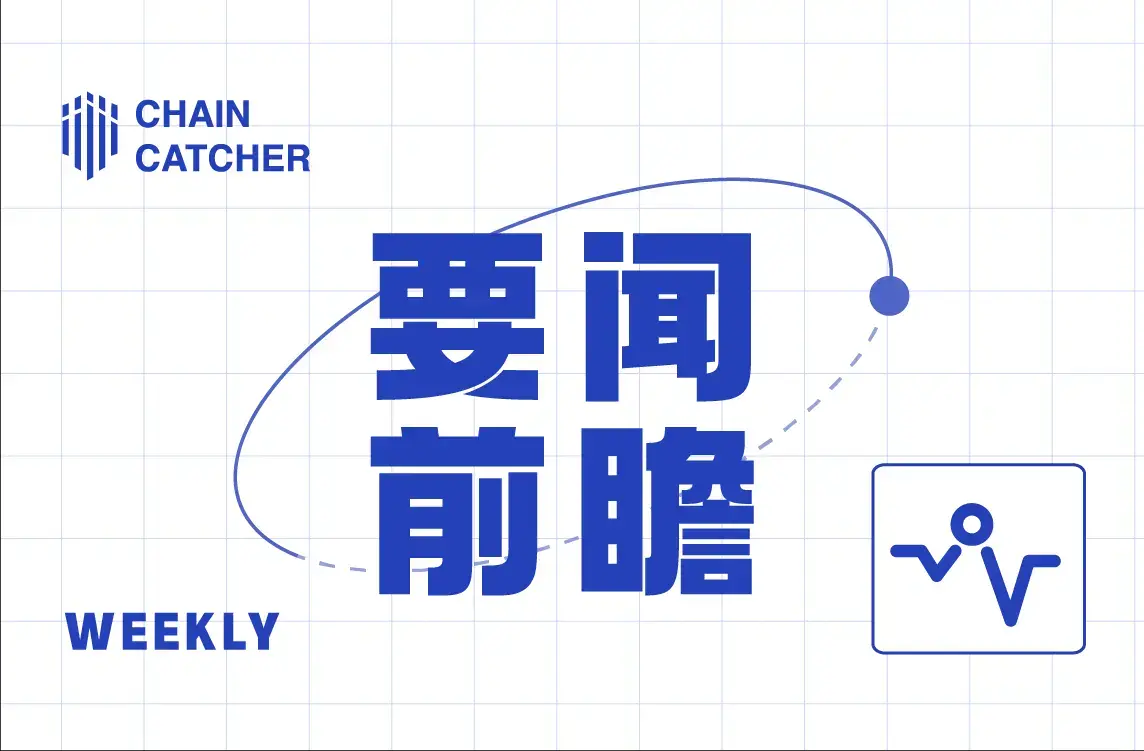"Interoperability is the future," an article to understand the three giants of chain abstraction: Axelar, Wormhole, and LayerZero projects and their development status
Author: Climber, Golden Finance
"Interoperability is the future"------Vitalik Buterin.
Terms like cross-chain bridges, chain interoperability, and account abstraction can all be categorized under the chain abstraction track, a concept proposed by the co-founder of Near. Chain abstraction aims to solve interoperability issues such as cross-chain communication, asset transfers, and cross-chain smart contract calls by building universal and versatile smart contracts.
Recently, the LayerZero airdrop detection witch event has sparked much discussion in the community, and market focus has once again shifted to the chain interoperability track. Currently, projects in this sector generally have significant funding and high valuations. This article selects three representative projects—Axelar, Wormhole, and LayerZero—as samples to outline and analyze their latest developments.
1. Axelar Network
According to Messari's definition, Axelar Network (AXL) is a Layer 1 that enables cross-chain interoperability among various crypto ecosystems, essentially forming a crypto coverage network. Axelar has a set of Gateway smart contracts that connect the Axelar network and its interconnected external chains, along with a software development kit (SDK) that includes developer tools and APIs.
Axelar not only supports bridging any information/assets but also enables cross-network execution of smart contracts and dApps, achieving full-stack interoperability.
Currently, Axelar has connected over 60 blockchains, including Arbitrum, Avalanche, Base, BNB Chain, Ethereum, Optimism, Polygon, Scroll, and various Cosmos-based chains, leading other cross-chain networks in this regard. Its interactive, cooperative, and integrated smart contracts exceed 600, including leading projects in DeFi, public chains, and Layer 2.
Mechanism Principle:
Axelar is a cross-chain interoperability project primarily focused on cross-chain operations, developed using the Cosmos SDK. Technically, the Axelar network consists of three key components distributed across two functional layers. The infrastructure layer includes a decentralized dynamic validator network responsible for maintaining the network and executing transactions. These validators run the cross-chain gateway protocol, which is a multi-party cryptographic overlay layer situated above the Layer 1 blockchain.
Secondly, the gateway component is installed on the connected blockchains, existing as smart contracts on EVM chains. Validators monitor incoming transactions in the gateway, reach consensus, and then write data to the target chain's gateway to execute cross-chain transactions. Above this infrastructure layer, Axelar also provides APIs and SDKs, enabling developers to easily perform cross-chain operations between two chains.
On the functional layer, Axelar introduces a General Message Passing (GMP) system that transcends traditional bridging functions, allowing for the cross-chain sending and receiving of various payloads, such as function calls, data, and wrapped assets. Axelar's architecture adopts a hub-and-spoke topology, serving as a central hub connecting various blockchains.
To enhance security, Axelar employs measures such as secondary voting and frequent key rotation. Additionally, Axelar gateways use rate limiting to restrict the amount of assets that can be transferred within a certain time frame.
Funding Information:
As of March 5, 2024, Axelar has completed five rounds of funding, raising a total of $113.8 million. During its Series B funding round, it raised $35 million, bringing the project's total valuation to $1 billion. Investors include Binance, Polychain Capital, Coinbase Ventures, Dragonfly Capital, Crypto.com Capital, and others.
It is worth noting that the most recent funding round was completed in March 2022, nearly two years ago. The project is currently listed on exchanges such as Binance, with a peak price of $2.77 and a current market cap of $724 million.
Key Data:

According to Axelar's block explorer, the number of cross-chain activity transactions on the Axelar network is 1.823 million, with a transaction volume of $8.62 billion and an average transaction volume of $4,728.

From the above bar chart of various data in the Axelar network, it can be intuitively seen that since January 2023, the inter-chain network activity of the Axelar network (i.e., transactions and active addresses) has gradually increased, with General Message Passing (GMP) activities gradually dominating network activity.
However, it should be noted that in May of this year, various data from Axelar sharply decreased, which is attributed both to the overall downturn in the crypto market and the fact that May had only just begun ten days prior.
Additionally, according to a report released by Binance Research in February this year titled "Analyzing Cross-Chain Interoperability," Axelar's transaction volume over the past 30 days is twice that of Wormhole and nearly eight times that of Chainlink CCIP.
This growth is primarily attributed to the implementation of its General Message Passing (GMP) feature, which supports complex cross-chain function calls and state synchronization. Furthermore, GMP began supporting interactions between Cosmos and EVM chains in May 2023.
Future Plans:
At the end of January this year, Axelar announced its roadmap, with its upcoming development focusing on AVM, specifically including the following points:
1) Making AVM a development platform for open-source tools to facilitate various Dapp development.
2) Achieving permissionless connections to any chain through the Interchain Amplifier, extending potential network effects to hundreds of blockchains, including Ethereum Layer 2.
3) Expanding the use cases of Interchain Tokens, enhancing their availability across all connected chains.
4) Adding a gas burning mechanism for the AXL token to achieve deflation and protect the Axelar network.
5) Integrating consensus mechanisms from different chains, including Solana, Stellar, and Move-based chains like Aptos and Sui.
6) Improving the gas pricing mechanism to enhance the accuracy of cross-chain gas estimation services on the Axelar network.
Major Actions:
In May of this year, Axelar announced cross-chain interoperability with Bitcoin, Hedera, and the Polkadot ecosystem. The Bitcoin L2 network Stacks, the open-source proof-of-stake blockchain Hedera, Moonriver Network, and the privacy network Iron Fish will serve as the first phase of the Axelar Interchain Amplifier pilot program, enabling one-click programmable interoperability.
Additionally, it is noteworthy that Solana and Sui will be included as upcoming projects in this roadmap.
In November last year, Axelar collaborated with JPMorgan's digital asset platform Onyx and alternative asset management firm Apollo to implement a proof of concept (POC) project involving business RWA.
In July, Axelar launched its Interchain Token Service (ITS), designed to enhance the interoperability of ERC-20 tokens across all Ethereum-compatible chains.
Moreover, Microsoft announced a partnership with Axelar to provide blockchain interoperability solutions.
In February, Axelar launched the Axelar Virtual Machine (AVM), allowing developers to build a DApp once and run it across all chains.
2. Wormhole
Wormhole is a universal messaging protocol that enables app interconnectivity across multiple blockchain ecosystems. The project was first launched in October 2020, aiming to allow developers to build native cross-chain applications covering multiple chains. Wormhole initially started as a hackathon project, seeking a solution to enable blockchains to "communicate with each other."
Wormhole was initially incubated and supported by Jump, with its first version (Wormhole V1) primarily focused on establishing a bi-directional token bridge between Ethereum and Solana.
As the project evolved, Wormhole has transformed into a universal messaging protocol connecting multiple chains within the ecosystem. The project aims to serve as a foundational layer for developers to build diverse cross-chain applications, leading to the gradual phasing out of Wormhole V1 and the launch of the Wormhole protocol in August 2021.
Currently, Wormhole has evolved into a universal AMB (Arbitrary-Message-Bridge) bridge that supports the transmission of arbitrary messages across 38 heterogeneous public chains, also known as a universal cross-chain messaging protocol or interoperability protocol. Each connected blockchain has a Wormhole core contract serving as the main interface for cross-chain apps. The asset cross-chain bridge functionality of Wormhole is handled by the front-end application Portal Bridge, which provides external services.
Wormhole is secured by a network of 19 guardians, responsible for monitoring chain activities and validating messages. These guardian nodes are operated by reputable entities in the cryptocurrency industry, such as Jump Crypto, ensuring high trust and operational integrity due to their accountability to the public.
Wormhole Communication Process:
Messages sent through the Wormhole core contract are forwarded to guardians, who independently verify and approve the authenticity of the messages.
Guardians verify and sign: The message is verified and signed off-chain by 19 guardian nodes. Only messages that receive signatures from at least 2/3 (i.e., 13/19) of the guardian nodes are considered authentic. Once verified, the message is encapsulated into a structure known as a "Verifiable Action Approval" (VAA).
Transmission to the target chain: Relayers transmit the VAA to the core contract of the target chain for execution.
Funding Information:
In November 2023, Wormhole completed a $225 million funding round, with a project valuation reaching $2.5 billion. Investors include Brevan Howard, Coinbase Ventures, Multicoin Capital, ParaFi, Dilectic, Borderless Capital, Arrington Capital, and Jump Trading. This round of funding is also the largest funding round for cryptocurrency projects in 2023.
Key Data:

According to Wormholescan data, Wormhole has transmitted over 1 billion messages across different chains, ranking first among all interoperability protocols. Its historical total transaction volume is approximately $42.39 billion.
Currently, the Wormhole token W is priced at $0.59, with a market cap of approximately $1.069 billion. Its circulating supply is 1,800,000,000 W, with a maximum supply of 10,000,000,000 W.
Major Actions:
In April of this year, Wormhole's native W token became available on Solana, Ethereum, Arbitrum, Optimism, and Base through Wormhole Native Token Transfers (NTT). W has become a native multi-chain token, completing the second phase of the W release roadmap. In March, Wormhole conducted a token airdrop.
In February, Wormhole introduced the native token transfer (NTT) feature to retain token characteristics and address liquidity fragmentation issues across different blockchains.
NTT is an open-source framework for transferring tokens across blockchains without liquidity pools. By utilizing NTT, projects can fully control how their tokens behave on each chain, including token standards, metadata, ownership/upgradability, and custom features. With NTT, projects can also maintain fine-grained control over their security, such as rate limiting, pausing, access control, and balance accounting.
In the same month, Wormhole announced it would adopt AMD's FPGA hardware accelerator chips to enhance the use of zero-knowledge proofs (ZKP) in cross-chain messaging. The project plans to achieve this through "light clients," integrating ZKP for secure cross-chain transfers, aiming to create secure "channels" for messaging between different blockchains.
Additionally, the Wormhole Foundation is collaborating with the Succinct team to build an Ethereum "ZK light client" to further advance decentralized message verification within the Wormhole platform.
In December last year, Wormhole launched a $50 million cross-chain ecosystem fund and a cross-chain instant data retrieval method called Wormhole Queries, allowing application developers to extract any on-chain data on demand.
In August, Wormhole established the Wormhole Foundation to support individuals passionate about research and development in blockchain interoperability technology. In July, Wormhole released version 0.0.7 of its cross-chain integration solution Wormhole Connect.
Roadmap:
Wormhole announced that W would become a native multi-chain token, leveraging the unique advantages of Solana and EVM chains while introducing a multi-chain governance system.
Plans for W include: launching as a native SPL token on Solana; expanding on EVM chains using Wormhole native token transfers (NTT); allowing W holders to lock and delegate their tokens on both Solana and EVM chains. The Wormhole DAO, composed of W token holders, will operate through a multi-chain governance system.
This system will be available at launch on Solana, Ethereum mainnet, and EVM L2. Multi-chain governance will allow token holders to create, vote on, and execute governance proposals across different chains.
Regarding the ZK roadmap: Significant progress will be made in the trust assumptions of the Wormhole protocol and overall blockchain interoperability through the integration of zero-knowledge proofs.
The roadmap mainly includes:
Introducing cryptographic expertise: The Wormhole Foundation has provided contributor funding to four new engineering teams specializing in zero-knowledge cryptography, with announcements to be released in the coming weeks.
Unlocking hardware resources: Wormhole contributors will collaborate with strategic hardware providers to accelerate the implementation of light clients and procure hardware accelerators for Wormhole contributors as the number of channels and ZK-verified messages supporting ZK continues to grow.
Launching light clients: Light clients allow users and applications to quickly and efficiently verify the state of blockchain networks (e.g., account balances, smart contract data, etc.).
In the future, ZK light clients for blockchains (including Ethereum, Sui, Aptos, Near, and Cosmos) will be deployed and integrated with Wormhole to enable trustless bidirectional data transfer.
3. LayerZero
LayerZero is a full-chain interoperability protocol designed for lightweight message transmission across chains. LayerZero provides genuine and guaranteed messaging through configurable trustlessness. It acts as a "blockchain of blockchains," allowing other blockchain networks to communicate directly in a permissionless manner.
LayerZero supports any blockchain capable of running smart contracts, such as Ethereum, BNB Chain, Avalanche, Polygon, Arbitrum, Optimism, Fantom, and others. LayerZero also supports non-EVM chains, such as Aptos.
LayerZero enables cross-chain communication by deploying "LayerZero Endpoints" on the respective chains, which are lightweight clients composed of smart contracts with communication, validation, and networking capabilities, allowing users to achieve cross-chain communication in a single trustless and secure transaction.
LayerZero uses Oracles (currently Chainlink) and Relayers to convey information between LayerZero Endpoints on the target chain. Notably, any entity can assume the roles of Oracle and Relayer. The Oracle publishes the block headers from the source chain to the target chain, while the Relayer publishes transaction data and validates transaction proofs, with both Oracle and Relayer remaining independent.
It is important to note that LayerZero focuses solely on messaging between chains, capable of sending messages to any smart contract on any supported chain, serving as a messaging transport layer for smart contract communication between blockchains, without being responsible for asset transfers across chains.
A key feature of LayerZero is its Ultra-Light Node (ULN), which essentially utilizes the technical principles of light nodes to design a mechanism for ultra-light nodes, splitting the intermediate trust link into two through relayers and oracles, thus achieving better security at a lower cost.
This smart contract runs on each blockchain and acts as an endpoint for cross-chain communication. ULN uses block headers and transaction proofs to verify the validity of transactions and messages from other chains, ensuring security and efficiency.
The communication process between chains is primarily accomplished through external validation or on-chain light nodes. Light nodes are a mode of node operation, alongside full nodes and archive nodes. Different nodes on the same chain are a reduced version of that chain's information, with light nodes only storing the historical block headers and not the specific transaction information within the blocks.
The benefit of running verification on-chain through light nodes is that it completely eliminates the interference of external notary roles, achieving a high degree of decentralization based on the chain's own security, thus making it safer. However, this can lead to extremely high cross-chain costs, which will ultimately be passed on to users with cross-chain needs.
From a product and technical perspective, LayerZero focuses on achieving "lightweight" data transmission, thus opting to use oracles and relay networks for data transmission. When users complete operations at LayerZero's source chain endpoint, the oracle, as an external component, forwards the block header of the transaction from the source chain to the target chain, while the relayer obtains the transaction proof from the source chain and transmits it to the target chain.
Mechanism Features:
Ultra-Light Node (ULN): LayerZero uses on-chain ULN, which runs on each blockchain and acts as an endpoint for cross-chain communication. ULN uses block headers and transaction proofs to verify the validity of transactions and messages from other chains, ensuring security and efficiency.
Universal Messaging: LayerZero supports any type of cross-chain communication, not just asset transfers. LayerZero can support any type of payload, such as function calls, data exchanges, governance votes, NFT transfers, etc. This enables developers to create full-chain applications that leverage the functionalities and advantages of multiple blockchains simultaneously.
State Sharing: LayerZero allows applications to share state across chains, meaning they can synchronize data and logic without relying on centralized servers or databases. This enables applications to operate as a single entity across multiple chains, creating a seamless user experience and reducing complexity.
Instant Finality: LayerZero guarantees instant finality for cross-chain transactions, meaning they are confirmed as soon as they are included in a block on the source chain. This eliminates the need to wait for confirmation on the target chain, thereby increasing speed and availability.
Funding Information:
LayerZero has completed multiple rounds of funding, raising a total of $293.3 million, with investors including Binance Labs, Delphi Digital, a16z, Sequoia Capital, Coinbase Ventures, and other prominent capital firms.
In April 2023, LayerZero Labs completed a $120 million Series B funding round at a valuation of $3 billion; in March 2022, LayerZero Labs completed a $135 million Series A+ funding round, post-funding valuation of $1 billion; in September 2021, the project completed a $6 million Series A funding round, led by Multicoin and Binance Labs.
Key Data:

According to data from LayerZero's official website, LayerZero has connected over 50 blockchains and is continuously increasing, with a total of approximately 132 million communication messages and a transferred value exceeding $50 billion.
Major Actions:
As the airdrop and TGE timeline approaches, LayerZero released a witch self-reporting process with a 14-day deadline.
On May 11, LayerZero Labs published a "Protocol RFP" proposal in the community. The proposal indicates that all projects that deployed OApp, OFT, or ONFT contracts on the mainnet before Snapshot #1 and declared them on LayerZero Scan are eligible to submit proposals.
Examples of project allocation include: 50% allocated to users of cross-chain OFT, 20% to LPs, 15% to token holders, and 15% to community members. Meanwhile, the LayerZero Foundation will screen based on the final witch report, and witch addresses will automatically lose allocation eligibility.
At the same time, the project team stated that the Protocol RFP is just one aspect of the TGE, and more information regarding token allocation (including individual user allocations and future protocol allocations) will be announced soon.
On May 4, LayerZero released the witch self-reporting process with a 14-day deadline. On May 2, LayerZero Labs announced the completion of the first phase of the network snapshot.
In April, LayerZero announced that weETH had adopted the OFT standard and would soon be launched on Blast, Optimism, Base, Linea, Mode, and BNB Chain.
In January, LayerZero's mainnet launched, and LayerZero V2 went live, introducing new features such as universal messaging, modular security, permissionless execution, unified semantics, and V1 compatibility.
In November last year, LayerZero Labs launched a value attribution solution called ColorTrace, which enables the attribution (coloring) of fungible tokens to original entities (minting parties) for fair tracking of contributions to protocol success, helping achieve fair distribution for revenues, affiliate programs, referral links, and many other common real-world applications.
In October, LayerZero launched the wrapped stETH (wstETH) feature for transferring liquid staking protocol Lido Finance on Ethereum, Avalanche, and BNB Chain. wstETH has been integrated with LayerZero's universal fungible token standard (OFT standard).
Conclusion
With the development of the blockchain ecosystem, the number of various blockchains has reached hundreds, and inter-chain interaction has become an inevitable trend. Enhancing chain interoperability improves the liquidity of digital assets, enriches the blockchain ecosystem, and simplifies the barriers to cross-chain interactions. Based on this, since the beginning of this year, major exchanges, including Binance, have successively listed Axelar and Wormhole, while LayerZero is likely to follow suit.
However, the chain abstraction track also faces security issues similar to those of previous cross-chain bridges, making it susceptible to hacker attacks. Moreover, chain interoperability protocols are still in their early stages and face centralization risks. Therefore, for such institutions making large investments in high-profile projects, investors may consider adopting a long-term perspective.














